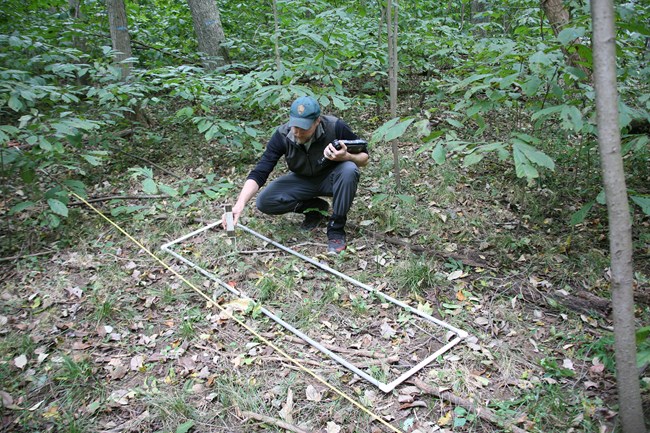
NPS/Nortrup
The National Capital Region Inventory & Monitoring Network monitors air quality, amphibians, birds, forest pests, vegetation, and invasive plants at Chesapeake & Ohio Canal National Historical Park. The results of that monitoring provide park managers with scientific information for decision-making.
Chesapeake & Ohio Canal National Historical Park spans 184.5 miles adjacent to the Potomac River, crossing through the Atlantic Coastal Plain, Piedmont, Blue Ridge, and Valley and Ridge physiographic provinces. This diverse landscape results in the rich geological, ecological, and biological diversity including over 1,500 different species of plants, geologic formations such as Great Falls and limestone caves, and 261 streams flowing through or under the park.
The park’s main natural resource management concerns are invasive plants and diseases, overpopulation of deer, and encroaching urban development. Stormwater management is a big concern for stream ecosystems. Climate change is predicted to negatively affect park resources, including worsening air quality, changing forest composition, and favoring invasive species and forests pests and diseases.
What's Happening in C&O Canal
NCRN Monitoring at C&O Canal by the Numbers
| What We Monitor | Sites at C&O Canal | Monitoring Frequency | Information We Collect |
|---|---|---|---|
| Amphibians | 274 known wetland pools 26 known stream transects |
Annual sampling on a subset of known wetlands |
|
| Birds – forest only | 90+ (forest bird) | Forest plots are monitored twice a year |
|
| Forest vegetation | 74 (forest vegetation) | Approximately a quarter of plots each year on a four-year cycle |
|
Last updated: September 22, 2022
